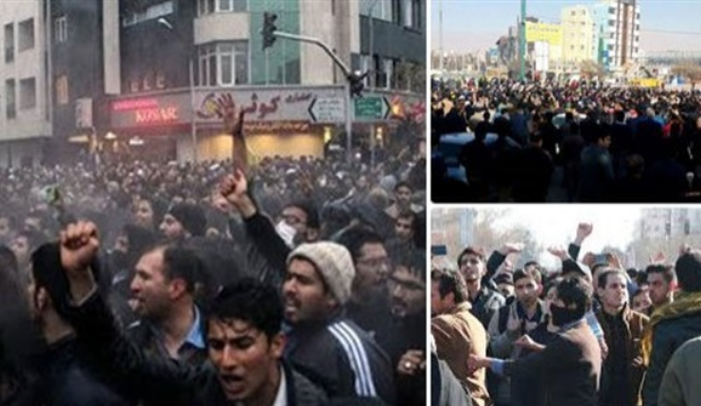Mohamed Shaat
In conjunction with the second anniversary of the fuel protests in Iran, angry demonstrations were renewed again both inside Iran and abroad, as strikes were renewed in some labor sectors, while the opposition abroad organized events in many countries to demand that the regime be prosecuted for the crimes it committed against the demonstrators and its disregard for the demands of the populace.
Internal protests
Reports of the Iranian opposition revealed protests and strikes by workers and other segments of the Iranian people against the tyranny of the mullah regime and to improve poor living conditions.
On Sunday, November 7, protests were organized by various segments of the citizenry, including a protest by nurses in Tehran, a protest by steel pensioners in Isfahan and Ahvaz, a protest of car-manufacturing workers in Tabriz, and a protest of sugar-cane pensioners in Haft Tappeh.
A group of nurses working in the Social Security Organization (SSO) also organized a protest sit-in in front of the Shura Council, protesting the officials’ neglect of their demands. They demanded the application of the law related to difficult and harmful professions, calculating the duration of military service as a difficult work that must be included in their career path, and increasing legal provisions in proportion to Ministry of Health and extraordinary private affiliation.
The steel industry retirees in Isfahan and Ahvaz also organized a protest gathering at the same time to protest their difficult living conditions. It should be noted that the salaries paid to these retirees are equivalent to one third of the official poverty line. These retirees organized multiple protest gatherings during the last month.
Demonstrations abroad
Iranians’ demonstrations spread to several countries abroad, where vigils were organized to support the uprising in various countries, including Germany, Switzerland and Sweden. The demonstrations called for Supreme Leader Ali Khamenei and President Ebrahim Raisi to be tried, denouncing the crimes committed by them when the resistance invaded hundreds of cities in November 2019 to overthrow the mullah regime. The repressive regime forces subsequently opened fire on the demonstrators by order of Khamenei, killing at least 1,500 people.
The demonstrators, supporters of the People’s Mojahedin Organization and the Iranian resistance, called for solidarity with the November 2019 uprising and its martyrs and the trial of Khamenei and Raisi. An exhibition was also held to commemorate the November 2019 uprising.
Regime concerned
In conjunction with the protests at home, the Iranian police recently announced the arrest of ten members of the leaders of the fuel protests, amid officials’ fears that demonstrations would take place on the second anniversary of the protests in which dozens were killed and hundreds arrested.
Reports quoted the Imam Hassan Mujtaba Brigade in Alborz governorate, west of the capital, as saying that they were able during a qualitative operation to arrest the protest leaders, without specifying their number or identity, noting that they were planning to destabilize the security and stability of the province and the rest of the country by carrying out “sabotage operations.” The brigade stressed that the movements of dissident groups are subject to full control by the Revolutionary Guards.








































admin in: How the Muslim Brotherhood betrayed Saudi Arabia?
Great article with insight ...
https://www.viagrapascherfr.com/achat-sildenafil-pfizer-tarif/ in: Cross-region cooperation between anti-terrorism agencies needed
Hello there, just became aware of your blog through Google, and found ...